Machine error Analysis
Innovation
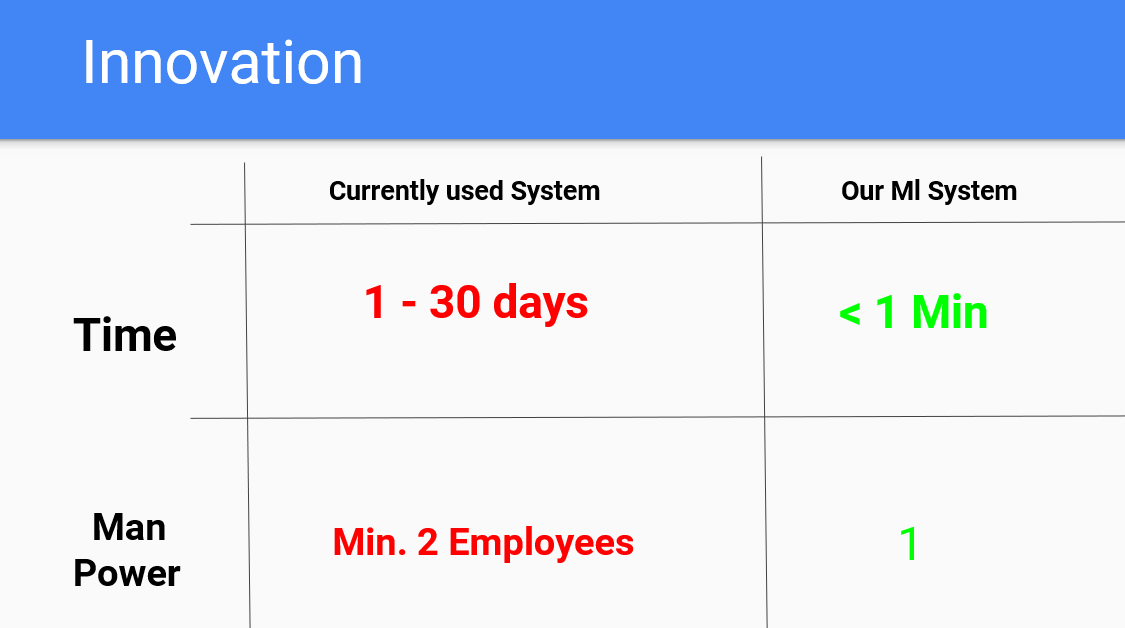
In the above image we can see comparison between our system and the current method of detecting deviations. Two parameters compared are time and man power. Our model takes less than 1 minute to provide predictions compared to the 1 month and only 1 person to operate the system.
Final Dot Net Gui
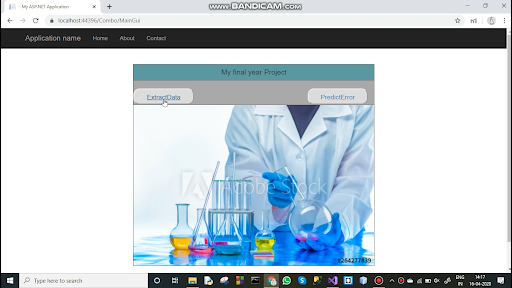
Project Goal
The project aims at developing an AI model that identifies the root causes of problems caused in the machine and provides corrective actions.
About Our Clients

Fransha Pharma LLP is a global regulatory and technical service provider for the pharmaceutical, bio pharmaceutical, healthcare and medical device industry,whose goal is finding the best solution for their clients. One of the challenges they face is the time and resources spent in detecting machine/ root causes. In this project we aim to build an ml system which helps automate the deviation analysis process.
Problem Statement
Given a deviation predict the root cause/s
What is Deviation ?
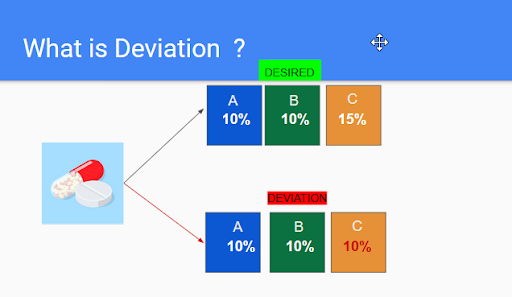
Any product which has deviated from its desired result and produces unknown or unwanted results is said to have been deviated from the actual goal hence the name deviation. Consider the above figure in which we are assigned the task of manufacturing a tablet. The tablet is made up of three chemicals, chemical A,B,C. which need to be added in proper concentrations 10% of A and B and 15% C. But due to some error called as root cause we deviate and add 10% C. As a result of this error the final product deviates from the intended product. Now our job is to detect this error and prevent it in the future so such a deviation does not occur again. In this project we need to build an AI system which helps detect such errors also termed as root causes. For all possible root causes refer to the output section. For the above example one of the possible root causes might be procedure . A single input can have multiple root causes hence this is a multi-label problem.
Requirements and My Role
Requirments:
- Given the deviation see if its possiable to develope a ML system which can detect root causes with acceptable probability.
- The final gui needs to be created using the .Net MVC Framework.
Implementation Details
About the Data
In this section will discuss the input and the output and the way we prepared out dataset in brief
Output Section:
Before looking at the input data lets take a look at the output and understand the problem.Below is the image of the all the possible root causes. Our problem is a multi-label problem where the model can predict one or n of such root causes. There are 6 main categories of root causes and they have all have distinct root causes there are 42 distinct root causes (except other which was not considered as it doesn't convey any information).

Preparing the Input Data
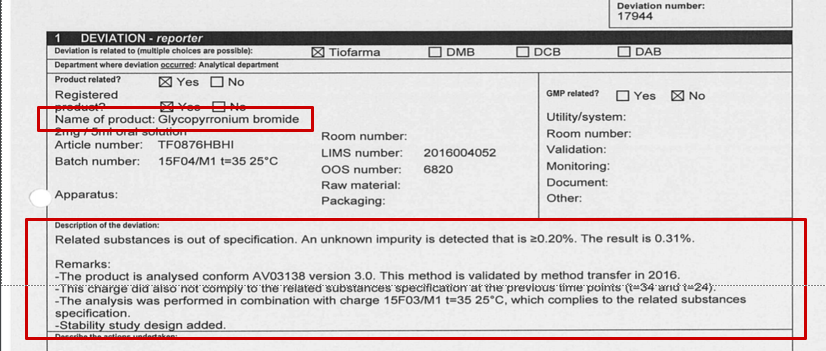
The input to the model is text data (refer to the image above )which comes more the deviation forms provided by our clients. From the above image the area highlighted in read will be our models input but first we needed to extract the text from the forms which were all in pdf format. We were given deviation forms from 9 different companies. A big problem we faced and the reason we didn't use a OCR system was that the deviation forms were documented by different companies and each company had a different format for recording their data. Some were digitally recorded and visually understandable while others were hand written and difficult to understand. Below I have provided two images from different companies we had 100 of such deviation forms mixed with other data.
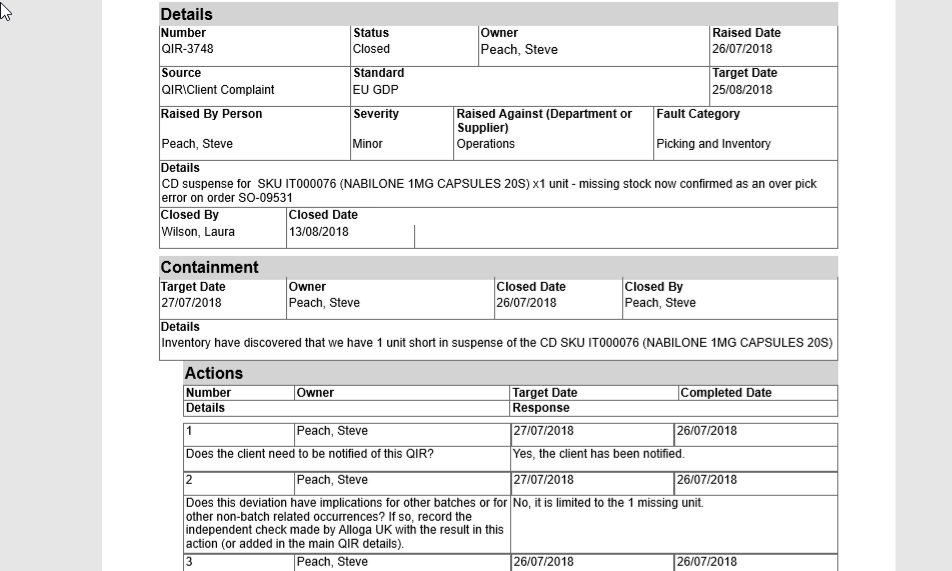
deviation form exmaple 1
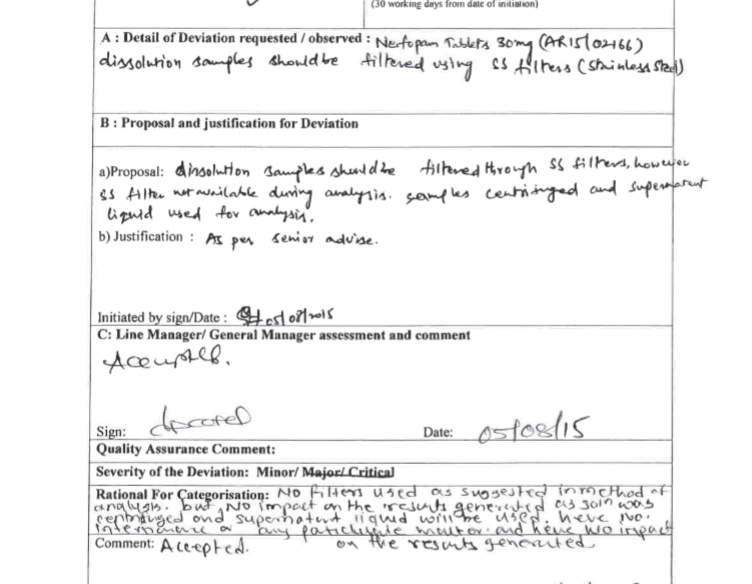
deviation form exmaple 2
To deal with this problem we created an data extractor application in python using the kivy. This application was later added to the final .Net application and with this we had a complete pipeline from data/store collection to re-training the model and do inference.
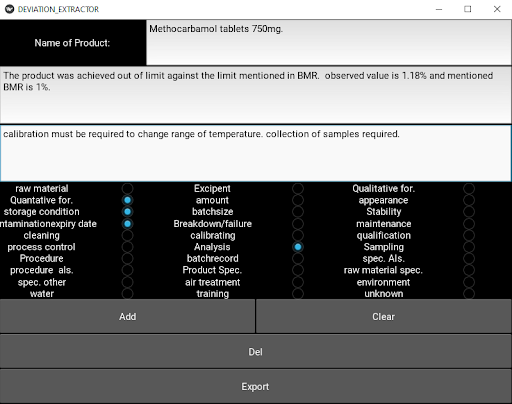
Image of the software used to extract / convert the data from pdf to csv. Since the size of our model was small we decided to include the data extractor in our final ml system.The extractor application provides an easy and standardized way to store data.
Model Selection
For the model selection process there were two things I had to consider the training time of the model and the memory requirements
as the final model would be hosted on a server.
The size of your dataset was fairly small so we could not test the models training time and memory consumption
so we used different larger datasets of the same type eg. (multilabel problems) we went for stackoverflow tag
prediction dataset containing 80,000 samples.
The models we considered are SVM , Multinomial Naive Bayes, Logistic Regression , SGDClassifier since this problem is
different form binary and multiclass we had to use training a strategy to train our models or find algorithms which could handle
multilabel targets.
Training stratigies include power transform and ensemble methods (OvR),we also used adaptive algorithms.
The training time and the memory requirements were to large for the power transforms
and the adoptive algorithms which could not be trained even in colab.
We selected the OneVsRest Classifier with the SGDClassifier.
The main reason we went for SGD was because it supported the partial_fit() method which allows us to re-train the
model on only a batch of data instead on the entire dataset saving time. The other reason was the different loss functions
supported by SGD which allows it to act like a logistic regression or SVM depending on the loss function value.
Rest Api

The api hosted on heroku supports three routes
- Predict: for prediction
- Re-train Soft: Just train the model and send the score but doesn't store the new data
- Re-train Hard: Re-trains the model and add the new samples to the existing samples.